I'm looking to plot the following histograms:
library(palmerpenguins)
library(tidyverse)
penguins %>%
ggplot(aes(x=bill_length_mm, fill = species)) +
geom_histogram() +
facet_wrap(~species)
For each histogram, I would like to add a Normal Distribution to each histogram with each species mean and standard deviation.
Of course I'm aware that I could compute the group specific mean and SD before embarking on the ggplot command, but I wonder whether there is a smarter/faster way to do this.
I have tried:
penguins %>%
ggplot(aes(x=bill_length_mm, fill = species)) +
geom_histogram() +
facet_wrap(~species) +
stat_function(fun = dnorm)
But this only gives me a thin line at the bottom:
Any ideas? Thanks!
Edit I guess what I'm trying to recreate is this simple command from Stata:
hist bill_length_mm, by(species) normal
I understand that there are some suggestions here: using stat_function and facet_wrap together in ggplot2 in R
But I'm specifically looking for a short answer that does not require me creating a separate function.





